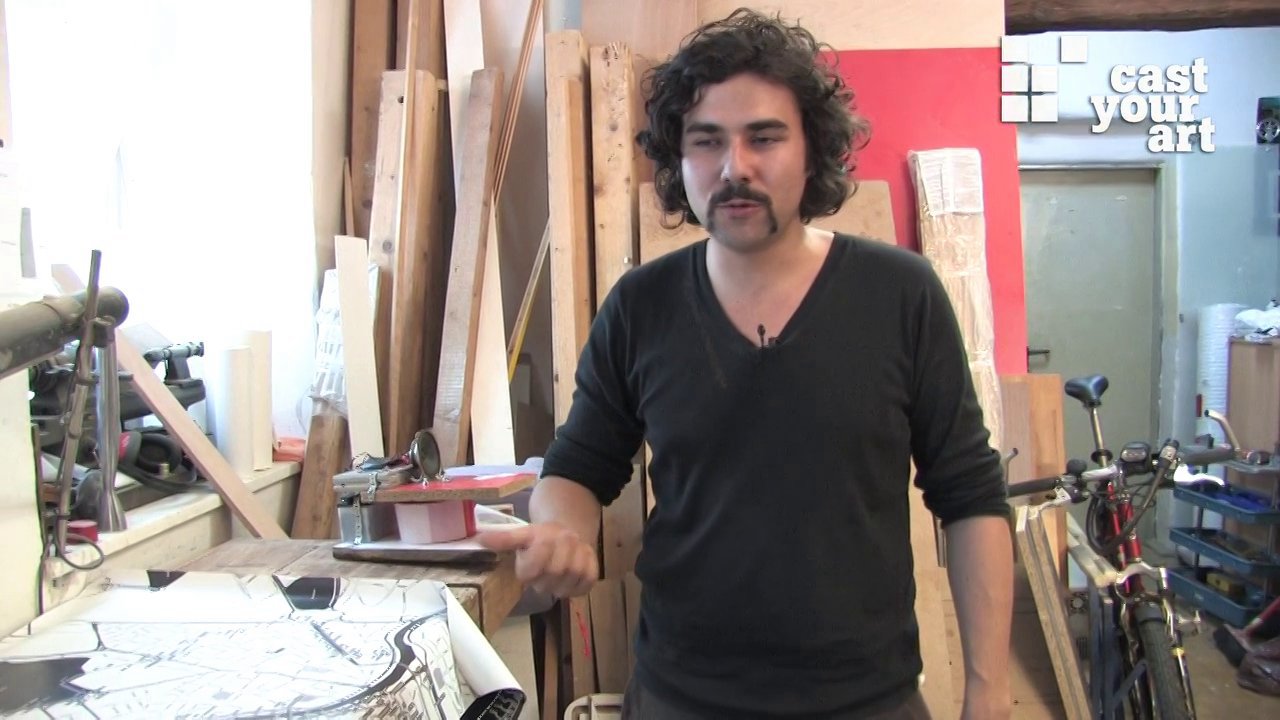Manfred Hebenstreit - Processes and Transformations
The art of Manfred Hebenstreit is an ongoing open experiment, into which the artist puts everything: body and soul, sensations and emotions, irony and restlessness. Hebenstreit develops an obsessive work, based on fracturing and transgressing the image, yet insisting on it, in order to express all its potential, including its oddest variations, in an eternal search for the real - which means the impossible.
In his painting there are narrative elements that can become so striking that the viewer is, as it were, able to follow the development of a story, just by letting his gaze wander over the surface of the canvas. In changes of texture, shade of colour, outlines and abrasions the pictures reveal the structure of their material and grounding – the stage machinery of the picture.
The surface of these pictures is rich in nuances, criss-crossed by lines and curves into all directions. Executed with broad strokes, they divide and structure the image space and create an ambience similar to figurative spaces. They often refer to an origin in an existing landscape, as in the case of the series the artist produced during long journeys abroad.
The shapes and lines obtain the capacities of music sheets, providing a rhythm that sets a sequential tune, offering a narrative to the viewers gaze. In this sense painting becomes melodious, a kind of visual lyricism.
Hebenstreit introduces narratives, metaphors and symbols within a sign system that needs no counterparts, references or links in the real world for its visual dimension. Once more the question of the legitimacy of using a narrative structure with its metaphors and symbols in a work of art arises. Originating in itself, here abstraction adopts the appearance of solid elements, which are on the one hand recognizable in their fragmented wholeness, yet on the other hand elude all objective connotations.
Nevertheless, in this case abstraction does not manifest itself through a system of self-referential signs. With this shift towards the act of seeing and its depiction, self-referentiality is not being celebrated but dissolved. Constant dissolution and recreation are the hallmark of Manfred Hebenstreit’s oeuvre.
This continuous decomposing and recomposing never seems to end completely, it is an open and flowing process where the artist records images pouring out of his unconscious, offering them to the viewers.
Originating from the most intimate and deepest abysses of the human psyche, Hebenstreit’s painting consists in a mental process in which the shapes, lines and colours serve as the bearers of the images’ expression.
This is the stream channel, the course where the fundamental procedures that give unity to Hebenstreit’s imagery inscribe themselves: sketchy structures, broad brushstrokes, blotches, colour patches, however not only on a purely gestural level. Subjected to the contrast with the inner ideal questioning it all, the outward image must be affected by an element of estrangement – to be eventually introduced into the digestive system of the imagination.
Instead of a consolidated image composition we find a trail, the colour patch. Here we see permanently uncompleted painting as the uttermost conception of desire – in full conscience that chaos can become an expressive force, by the disorder of which a different kind of order can be revealed. Imbued by contingency and confrontation, it dominates existence.
Without fearing all the contradictions, twists and turns, currents and counter currents in his work, Hebenstreit continues to work in his alchemist laboratory, in the eternal dissatisfaction that is essential for all true artists. (written by Cem Angeli)
Das könnte Sie auch interessieren

Fiene Scharp - Hair out of place
6. January 2010
The 1960s - Fantastic Modernism
29. March 2011
Warhol, Newman, Wool - 'Barney is now at another party'
21. October 0000
Gordan Savicic - Lat 54.136696 Long 13.771362
11. September 2008
Miquel Barceló - Matter and Form. From Matter to Metaphysics.
18. December 2012
Rudolf Rischer - Of Drawing and Stage
23. February 2018
MUSA - Beauty Contest
1. March 2012
